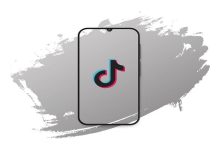If you have never heard of a landing page, you either live under a rock or are the wrong target for this post! No matter your situation, landing pages are crucial for any business. They are essentially a website that a person can visit to contact you. However, even if you already know what they are and are implementing them into your digital marketing strategy, there are some things that you might not know. This post will discuss four interesting points about landing pages that could significantly boost your marketing campaigns.
What Is A Landing Page?
A successful website relies heavily on the effectiveness of its landing pages. People expect to receive specialized information when they click on a link, which you must provide. Having said that, it is imperative to know that content is not just written words. Your content needs to be attractive, eye-catching, and engaging. Visitor retention is essential; you want them to read more of your posts or perform a specific action after arriving on your site. A landing page needs to have a clear goal and purpose. The goal of the landing page should be something that visitors are interested in or need help with.
It is essential to state what visitors will gain from clicking on the landing page so that they will know what to expect. Landing pages also need to have a strong call-to-action at the end of the page, making potential customers click on it and convert it into leads or sales. While they can be used for a range of online ventures, they are particularly beneficial for eCommerce businesses. This is because they can be used in conjunction with digital marketing campaigns to increase visitors’ likelihood of purchasing a product. When discussing landing pages regarding online shopping, they are usually specific product pages that the store owner wants to promote over other items. This could be because it is a new launch either to make sales or gauge reaction to something.
Four Facts You Should Know About Landing Pages
A landing page is your website’s first impression on the internet. It is vital to make sure that it is up-to-date, relevant, and effective to increase conversions, improve traffic, and increase engagement with your brand. But aside from the obvious, what else are they for?
You Can Use Them For A Variety Of Purposes
If you are already vaguely aware of what a landing page is, the chances are that you have a narrow view of what you can achieve with them. Many people imagine a page used to collect email addresses or sell products when they think of them, and while they can be used for these purposes, their uses extend beyond these.
You Can Use Them To Set Up A Funnel
An organization’s sales funnel consists of a series of steps to convert prospects into customers. The potential customer is moved through the sales process through interest, consideration, and ultimately purchase. Through a sales funnel, visitors can be guided through a series of steps to become paying customers. Your first step is to drive them to your landing page via advertising or SEO, which you can monitor and adjust as you gain more data.
You Can Build An List
While they do have other uses, a landing page is still predominantly used to collect and build a relevant email list. However, the most successful list builders will utilize several different landing pages to segment their readers enabling them to better promote and sell their products or services.
You Can Gather Customer Feedback
An interesting way that you could use these pages is to collect customer feedback on a variety of things. These data can be extremely valuable and help businesses improve their customer service or product offerings to improve customer retention.
They Are Barebones For A Reason
The best way to convert visitors to your website is with landing pages. You should keep several things in mind when building a landing page, including the fact that it must keep visitors on the page for as long as possible. In order to accomplish this, they are intentionally kept as simple as possible, eliminating extraneous links and menus to reduce the likelihood that visitors will leave. This is often why a landing page will look relatively basic compared to the rest of the site.
They Often Contain Odd-Looking URL Structures
Have you ever visited a website from an advert or random link and looked at the URL you have landed on? In most cases, it will look normal, but in others, you will see a random-looking stirring of symbols (usually an = sign) along with lots of other information. These URLs are known as Urchin Tracking Module (UTM) codes.
A UTM code allows marketers to track the performance of online marketing campaigns. It helps them identify which channels are performing well and which need more attention. Those who do not currently utilize UTM codes on their landing pages are missing out on a significant amount of data they could use to improve their campaigns.
Tracking Performance Is The Key To Gaining The Most From Them
Landing pages are not a set-and-forget kind of deal. They need to be constantly monitored and updated to get the most out of them as you receive new data. Marketers need to track the success of their digital marketing campaigns to be able to assess their success and effectiveness. Furthermore, it can help identify areas for improvement in their strategies.
One method is to implement A/B testing. Two versions of a website or landing page are tested A/B, typically with the goal of optimizing the website’s performance. Business owners usually use A/B testing to determine which version of a page converts best. When one variation has a higher conversion rate than another, it is deemed the winner and implemented on the website. You often find that simple changes to font size or color can dramatically increase conversion rates!
So, there you have it, four things you might not have known about landing pages. From learning how marketers use the weird URLs to discovering how simple changes can have a significant impact, there is a lot to explore about how they work.































